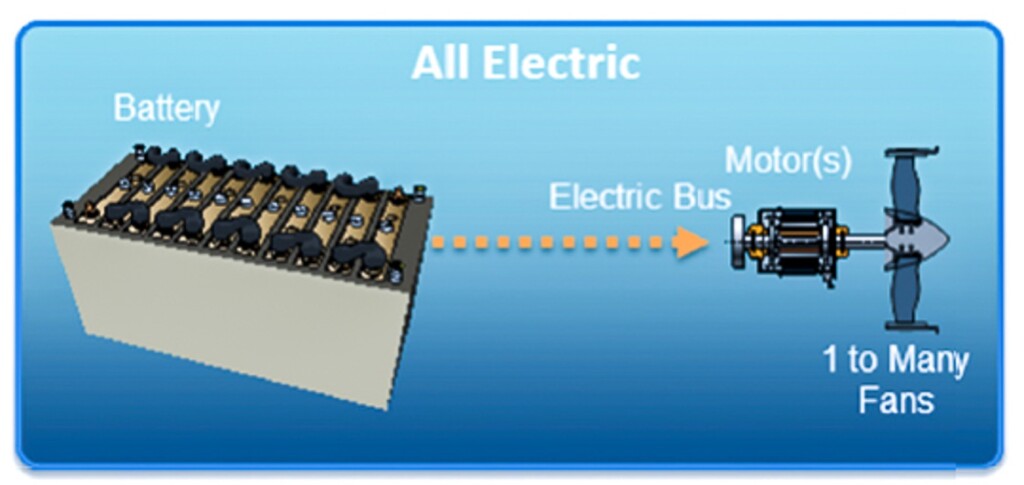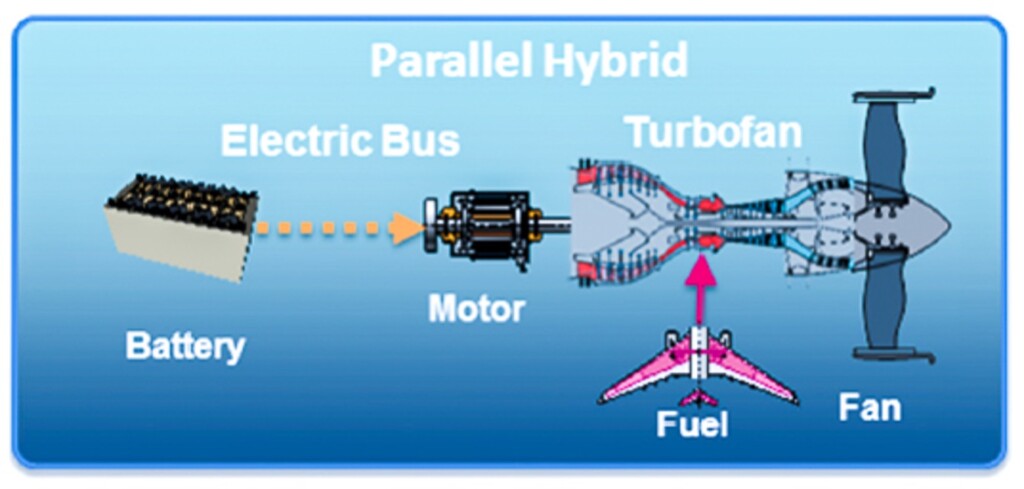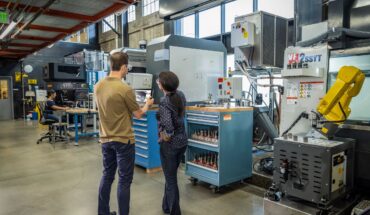Here’s a look at the benefits and limitations of all-electric, parallel hybrid and series hybrid systems.
Aircraft designers have experimented with various forms of electric propulsion for decades. The concept offers several benefits, such as reduced fuel consumption, reduced emissions and quieter flights compared to fuel-burning propulsion. However, challenges related to the weight and trip-range limitations of energy storage systems have limited the adoption of electric propulsion.
Increased focus on environmental sustainability has ramped up efforts to make electric propulsion and hybrid-electric propulsion more viable in the aviation industry. Numerous electrically-powered aircraft designs have been introduced since 2000, and the National Aeronautics and Space Administration (NASA) predicts electrified aircraft propulsion (EAP) technologies will be implemented in commercial aircraft by 2035. Let’s take a look at electric and hybrid-electric propulsion — what the two methods have in common and how they differ.

Electric propulsion
Simply stated, an electric aircraft is powered solely by electricity. The electricity may be generated via onboard energy storage systems such as batteries or off-board sources such as solar energy converted into electricity using photovoltaic materials. In most cases, electric motors drive propellers or turbines to propel the aircraft.

In addition to reducing emissions and noise, electric motors do not lose power with altitude, unlike internal combustion engines, eliminating the need for turbochargers and other power-boosting measures. Electric motors also require less maintenance than fuel-burning engines, according to industry sources.
Some of the challenges with electric aircraft propulsion are similar to those experienced with electric automobiles — battery weight and trip-range limitations. While electric motors generally weigh less than equivalently powered piston engines, the batteries weigh more than the equivalent in fuel. And the need to recharge batteries becomes even more critical with aircraft since recharging resources are typically ground-based.
Heat generated by electric motors is also a challenge. Approximately 20% of energy generated by electric motors is dissipated as excess heat that must be cooled, according to NASA.
To overcome the extra weight and energy to cool electrical systems, researchers and designers have focused on developing more efficient systems to keep components cooled while minimizing weight and heat loss. Innovative power and thermal management systems have been designed to increase efficiency and minimize heat loss. New materials have been developed to reduce weight and improve performance of mechanical and electrical components. And ongoing research continues to find opportunities to fine-tune electric propulsion designs.
Hybrid-electric propulsion
In hybrid electric aircraft, a combination of electric motors and internal combustion engines are used to propel the aircraft, offering increased flight ranges compared to pure electric aircraft. The two energy sources may work in parallel or series.
In a parallel hybrid system, an electric motor and a fuel-burning engine are connected to a common shaft that drives a fan, so one or both can provide propulsion at any given time. In a series hybrid system, only the electric motors are connected directly to the fans, and the fuel-burning engine drives a generator, which in turn drives the motors or charges the batteries.


Parallel and series hybrid systems each have pros and cons. While the interaction of two distinct power sources in parallel systems introduces additional design complexities, parallel systems have been shown to produce slightly better energy savings and emission reductions than serial systems. Series hybrid systems are compatible with distributed propulsion concepts, which enables the use of multiple motors and fans.
In addition to parallel and series systems, combined series-parallel partial hybrid systems have also been developed. With this approach, one or more fans can be driven by a gas turbine engine, and additional fans are driven by electric motors powered by a battery or a turbine-driven generator.
Other related technologies
In addition to electric and hybrid propulsion, several other related technologies have been introduced that could change the landscape of aircraft design. As an alternative to onboard electric power, solar-powered aircraft capture solar energy via solar panels and use batteries or hydrogen to store the energy for use when sunlight is not available. While conventional passenger or cargo applications have not yet been adopted due to power limitations, solar-powered uncrewed aerial vehicles (UAVs) have been shown to be viable for extended flight durations (months at a time), though at relatively low speeds (less than 100 mph). They could prove useful in telecommunications, imagery and other applications that interact with ground stations.
Turboelectric propulsion is also being eyed as a technology that can reduce emissions. This technology uses gas turbines to drive electric generators, which power inverters and direct current (dc) motors that drive the individual distributed electric fans. A variant of turboelectric propulsion, partial turboelectric propulsion, uses electric propulsion to provide part of the propulsion and a turbofan driven by a gas turbine to provide the remainder.
Electric propulsion is also being used in conjunction with vertical take-off and landing (VTOL) technology to power aircraft that can take off and land vertically without a runway. The concept of vertical flight appeared in Leonardo da Vinci’s sketches in the late 1400s and was later developed in the form of helicopters, which have generally been fuel-powered. Electric-powered VTOLs introduced in the 21st century are being considered for applications such as on-demand air taxi services, regional mobility and freight delivery.
Future adoption
Electric and hybrid propulsion will need additional refining and testing before either form becomes widely adopted. Like any new technology, high costs will likely limit their use to special applications initially. However, as technology matures and becomes more accessible, the sights and sounds of aircraft could be dramatically different than those of the past.





